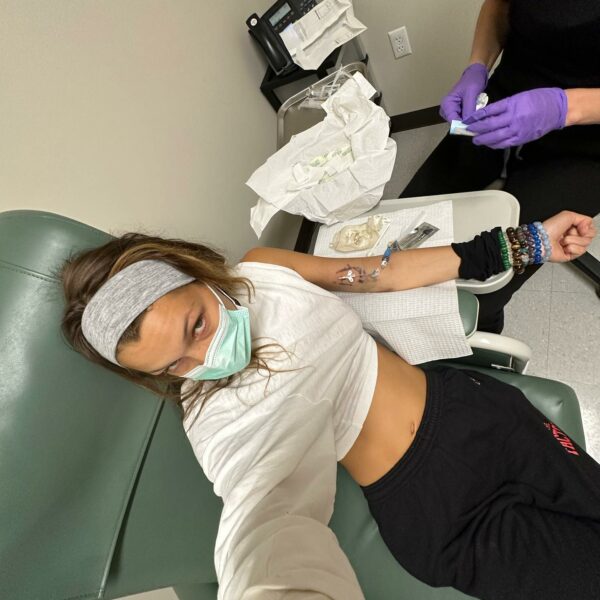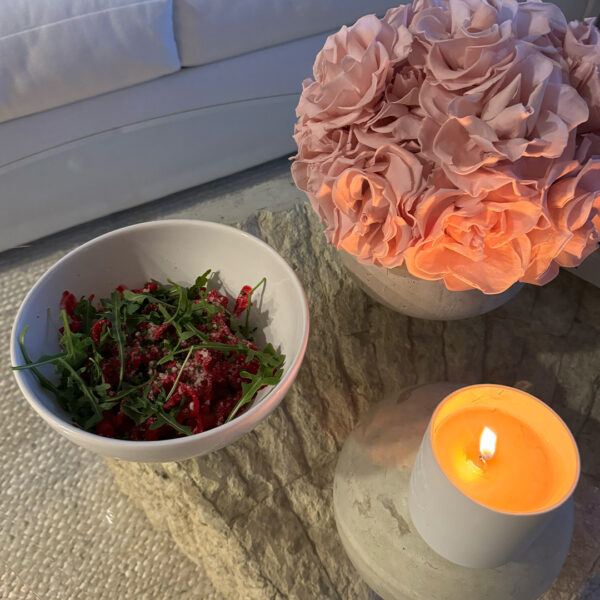We know, we know, eat our greens. And we’ve been told since we were little to eat seven to nine servings of fruits and veggies a day, but what you maybe haven’t been told or realized yet is we need all of our colors. We teach our clients to eat five colors a day because each food color offers a unique set of nutrients.
You have six general color options to choose from, and it’s actually easier than you think. For instance, if you’re eating an egg scramble, add different shades of bell peppers and onion, and you almost have five colors right there. If you’re enjoying a fruit smoothie, don’t forget your greens, which you often can’t even taste. Think stir fries and salads and soups, and your color wheel options are unlimited.
So let’s break down your veggies and which colors are going to give you which nutrients.
Think beets, radishes, tomatoes, red peppers, radicchio. Your reds are most famously known for lycopene, which protects our cells from damage. Reds are filled with vitamins A, B, C, and manganese. They’re powerful cancer fighters and touted for anti-inflammatory properties.
Think butternut squash, golden beets, pumpkins, rutabagas, yellow tomatoes, peppers, and obviously carrots. They’re high in beta-carotene and flavonoids, super high in vitamin C, and moderately high in vitamin A. These colors are known to promote good eye, skin, and hair health. Vitamin C is known to aid in the formation of collagen … hello anti-aging. These bright hues are also thought to encourage pH balance and fight damage from free radicals.
Think all the things: broccoli, lettuce, avocado, cucumbers, green onion, cabbage, brussels, snap peas, watercress … you get the point. This isn’t hard to convince people of. We all know we need more greens. Here’s why: they are filled with vitamins K, C, and B-complex. They are high in fiber. They have some of the most minerals: potassium, calcium, and trace amounts of many others. They aid in digestion and promote heart health. They may even aid in combating insulin resistance and diabetes.
Think eggplant, purple cauliflower, cabbage, purple tomatoes, purple endive, and purple carrots. While this color may be harder to come by in veggies than in fruits, it’s worth the find. Compounds found in these colors include ellagic acid, flavonoids, quercetin, vitamin C, vitamin K, manganese, and fiber. They support brain, heart, and digestive health. They help to lower LDL cholesterol and boost the immune system.
Think onion, garlic, cauliflower, potatoes, parsnips, mushrooms. Don’t forget about these guys! They are high in vitamin C, vitamin K, folate, and fiber. I know they aren’t the prettiest, but they are filled with immune-boosting and cancer-fighting abilities. They’re antibacterial, antifungal, and antiviral. This color group can help reduce the risk of many cancers, balance hormones, and more.
While we know we need to eat our veggies, let’s try to keep in mind how vital they are to our health.
Cara Clark is the owner and primary Certified Nutritionist of Cara Clark Nutrition. Cara works with individuals and groups to promote overall health and to manage a wide range of nutrition-related issues. With a ‘non-dieting’ approach, she has helped clients manage weight, energy, performance, diabetes, thyroid related disease, allergies, eating disorders, and more.
The content provided in this article is provided for information purposes only and is not a substitute for professional advice and consultation, including professional medical advice and consultation; it is provided with the understanding that Poosh, LLC (“Poosh”) is not engaged in the provision or rendering of medical advice or services. The opinions and content included in the article are the views of the author only, and Poosh does not endorse or recommend any such content or information, or any product or service mentioned in the article. You understand and agree that Poosh shall not be liable for any claim, loss, or damage arising out of the use of, or reliance upon any content or information in the article.




































